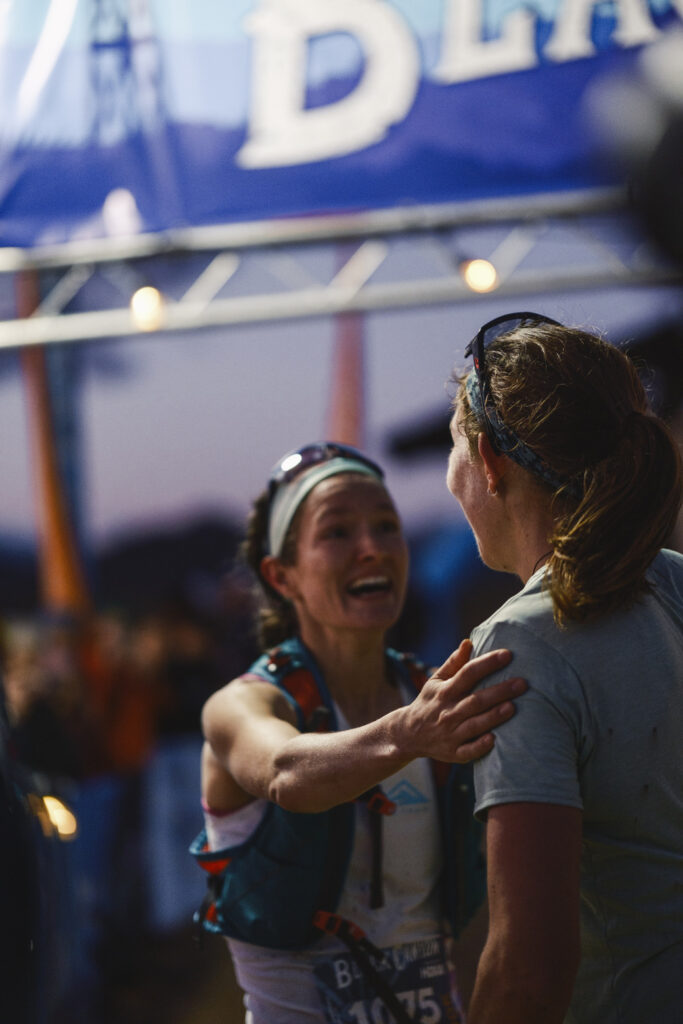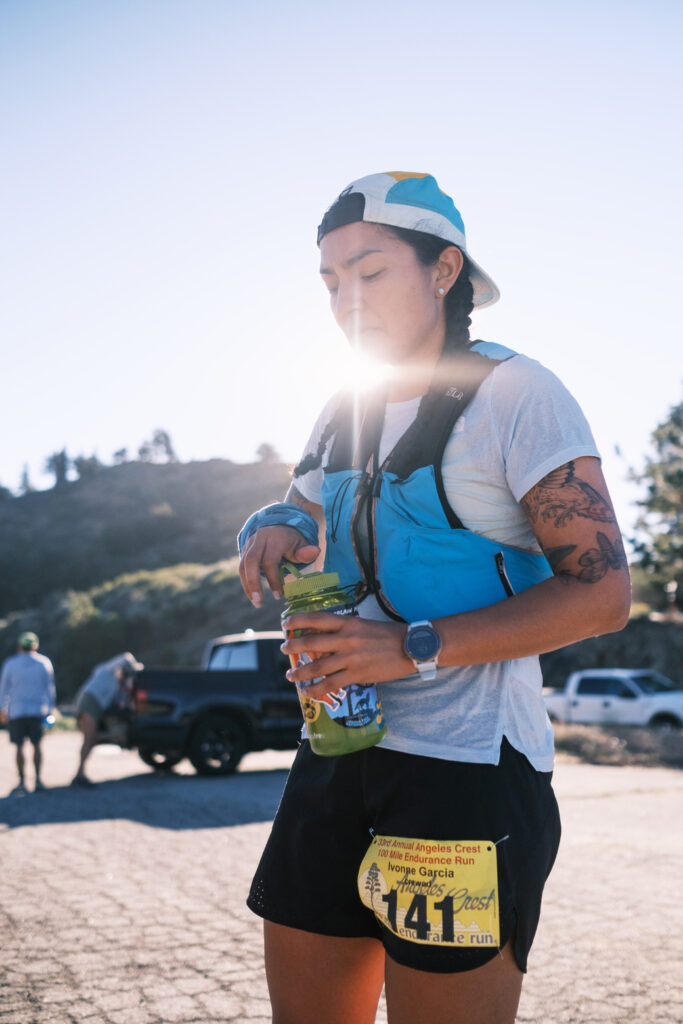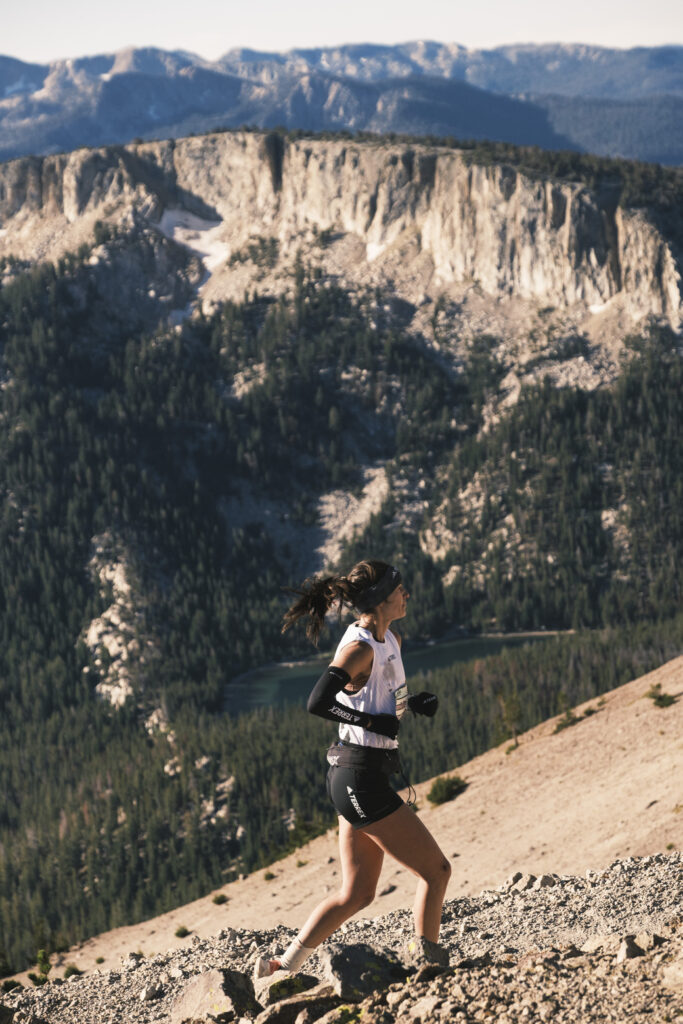Be it Women’s History Month or International Women’s Day we believe that showing up for women’s equality and supporting the women in our lives, community, and sport should happen on the daily – three sixty five.
In championing women in trail and ultra running, on March 8th, the International Trail Running Association (ITRA) alongside the Professional Trail Running Association (PTRA) and SheRACES put out a press release to highlight how we can all help to get more women onto trail and ultra startlines. So where do we even begin?
While there is a growing presence of women on startlines, particularly under the marathon, we are still a minority at most trail races. Sometimes this gets written off as (cue glare from me) “Maybe women just don’t want to do these races…” Speaking from my own experience, and the experience of my friends and peers “wanting” is not the barrier to entry. The want is present – but the visible and invisible barriers are often too much to hurdle.

“Trail running is a sport practiced in close proximity to nature. In its history, it was a male-dominated sport. We have to work consciously on making it accessible to women as well. It means the format has to match their needs, has to tell their stories, and has to set structures that makes it a welcoming environment to them.” – Womens Equality working group, PTRA
Many barriers in the endurance space for women are long-engrained societal norms that place a higher burden of home and childcare responsibilities on women, cutting into their potential training time. Some of that is the very real demands of life, but other times it’s the expectation of those norms, ie how spending our free time is perceived by others, that limits us. From a survey conducted by SheRACES, we wanted to share some of the many things race organizers, brands, and supporters can do to level the start line for women. This includes:
Before the Race
- Use Inclusive Imagery – From social media to race website banners consider the imagery you chose to use to highlight your event. Who is your race for? Not only does this include showcasing women, but also highlighting athletes who make up the front, middle, and back of the pack.
- Choose Language Wisely – Races like to utilize terms like “the toughest”, “the hardest”, and “the most difficult” – and while that may appeal to some (myself included) women are less likely than men to take on tasks they are uncertain they can accomplish. You can call something hard but also include language that helps runners understand what they need to finish, average paces, and minimum training guidelines.
- Thoughtful Cut-offs – Strict and early cut-offs penalize and deter many athletes, but have a larger impact on the women’s field. Average women’s winning race times are 8-10% slower than then men’s winning times, while at the same time, women are much more likely to be “timed out” vs electing to stop.
- Proactive Deferral Policies – Getting into races is hard for everyone, from Boston to Western States and everything in between, and until recently many of the biggest races penalized athletes when they missed a qualifying window or couldn’t take their place on the startline due to pregnancy. Several races have started to adopt broad parental deferral policies that include up to five years for parents carrying the child, and two years for anyone adding a child to their family unit.
During the Race
- Respect Our Competition – The women’s race is not an exhibition event and deserves equal recognition. This includes providing equal coverage of the women’s field before, during, and after the event; welcoming women to the front of the start line (and celebrating us at the finish line, and offering equal prizes to the men’s race.
- Provide Adequate Facilities – I’ve heard rumors that it’s possible to “pee out the side of split shorts”, but for essentially all of us doing things like peeing isn’t as simple as stepping to the side of the trail like our male counterparts. Providing adequate toilet facilities at start lines and finish lines, along with where appropriate on the course is a big deal. The addition of designated changing rooms, breastfeeding areas, and period products at aid stations will help more runners than we often realize.
- Safety – Women spend a lot more time thinking about their safety because we’ve had to, on and off the trail. Little things that can enhance safety for women at any event include having a mix of male and female volunteers at each aid station (this includes medical staff), and allowing for “safety sweeps” on the course when the route goes through remote areas or during overnight. Finally, communicate a zero-tolerance policy for any kind of harassment from runners, volunteers, and staff.

After the Race
- Seek Feedback – Actively seeking feedback from your participants after the race is your best opportunity to understand how you can continue to support every single runner better. We all make mistakes, overlook things, etc – but the best way to create an inclusive community culture is by rolling up our sleeves and doing the work.
- Share Our Stories – Sharing our stories is your most powerful tool to encourage more women to attend a similar event in the future. Authentically highlight us. Genuinely champion us. Acknowledge the barriers that have deterred women from attending in the past and how we are breaking that mold moving forward – show that a woman’s place is on the start line. The support from brands, race organizers, and male athletes need to support women’s sports as a vitally important component of promoting gender equality, challenging stereotypes, and creating a more inclusive and diverse sports culture.
“Trail running is practiced equally by women and men, but this doesn’t translate to race participation where women are outnumbered. I believe our role as male runners or race directors is to support women’s participation, not only by voice but with actions, and for that we need to change things, to work together for more equality in the sport, for better trail running.” – Kilian Jornet, Elite Trail Runner and cofounder of Nnormal
Supporting women both on and off the trail goes well beyond the confines of International Women’s Day. It requires a sustained commitment to fostering inclusivity, providing equal opportunities, and amplifying women’s voices year-round. In the trail running space, this includes actively promoting the participation of women in races and events, ensuring fair representation of sponsorships, and acknowledging and celebrating the achievements of these incredible humans. Off the trail, you can support this through mentorship programs and initiatives, and bringing awareness to the gender-based barriers many face. Encourage women to take leadership roles, be the person speaking other’s names in a crowded room, advocate for safe and accessible spaces for all, and actively promote a culture of respect and equality – because this can and will help create an environment where women thrive both on and off the trails every day of the year.

